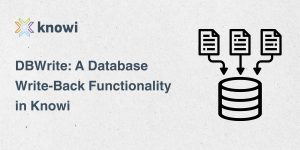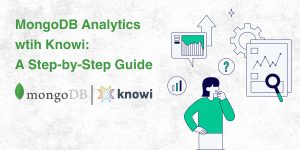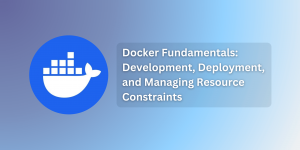You hear it everywhere that business teams are hungry for analytics. They crave accurate predictions and forecasts to allow them to make better business decisions, faster. The problem is data has become so complex that most of the time they have to wait for it to be analyzed and presented. They waste time waiting and when the report finally arrives it doesn’t provide what they wanted.
The whole exercise of doing business analytics today is a time-consuming, costly, and frustrating experience for everyone involved. At the same time, getting actionable insights into the hands of everyone is increasingly important to improving business operations and future competitiveness. Ugh. It’s time for something to change in a big way.
This is why you’re seeing a new wave of disruption in data analytics tools with the concept of augmented analytics gaining momentum.
“Augmented analytics will democratize insights from analytics including AI to all business roles. It will make data science and ML/AI model building accessible to new citizen data science roles (business analysts, developers, and others) while making expert data scientists more productive and collaborative, freeing them for high-value tasks.” – Gartner
What Is Augmented Analytics?
Augmented analytics gives anyone from technical users to data scientists, to business users the ability to access the intelligence they need to make decisions. It combines AI and Natural Language Processing (NLP) to expose previously unseen insights on any data.
Under the hood, an augmented analytics platform uses artificial intelligence and machine learning to automate data preparation, insight discovery, and sharing. They may still include traditional BI functions like dashboards and reports but augment them with natural language BI for a search-like experience. These interfaces allow business users to interact with their data and find insights on their own. Imagine what your data science teams could get up to if they didn’t have to answer every single business user’s question.
For your data scientists, augmented analytics provides an approach that automates insights using machine learning. It’s unlikely full automation is possible but a number of the more time-consuming steps to discover and prep data can be automated. It’s anticipated that automating these steps alone could shave weeks off analytics projects. Additionally, because these platforms can connect directly to any data, anywhere, the chance for adding unintended bias is reduced. This is important when creating training datasets for machine learning because removing bias will make models more accurate.
Why You Need It
Augmented analytics improves multiple areas within your current analytics workflows. Some of these include:
Augmented interfaces: you can expect augmented analytics tools to be easier to use. Providing natural language processing as well as conversational interfaces are naturally more intuitive and user-friendly for business people.
Automate data discovery: because augmented platforms are connected directly to data sources, data engineers can instantly discover data, relationships, and correlations. This enables them to dynamically blend data across sources. The result is the creation of the widest possible datasets within a few minutes.
More agile business intelligence: augmented analytics will enable data analytics to be delivered faster across the enterprise. Analytics will require fewer resources but increase data access by allowing business users a true self-service experience.
Benefits for Every Business
Augmented analytics solutions hold the promise to transform everything about how we do analytics today. It gives businesses of any size the ability to use data to their advantage by:
- Better utilizing analytics resources by eliminating time-consuming data prep tasks
- Enabling integration to any data not matter its structure or size
- Streamline data pipelines even when using complex data
- Democratizing data through more natural and conversational interfaces
- Broadening analytics adoption by embedding analytics in applications people are already using, making it easier to access actionable intelligence
- Exposing more relevant insights
The net result of implementing an augmented analytics solution is it exponentially increases in your organizational data literacy. You’ve broken down the old barriers so data and analytics become the backbone of every decision at every level of your organization.
With that, you leap forward in the analytics maturity model and never need to look back. We’re at the beginning of the augmented analytics journey and it promises to be an exciting ride. Buckle up!
To join us sign up for a free 21 day POC of the Knowi platform. Click here to start your own Augmented Analytics journey.






